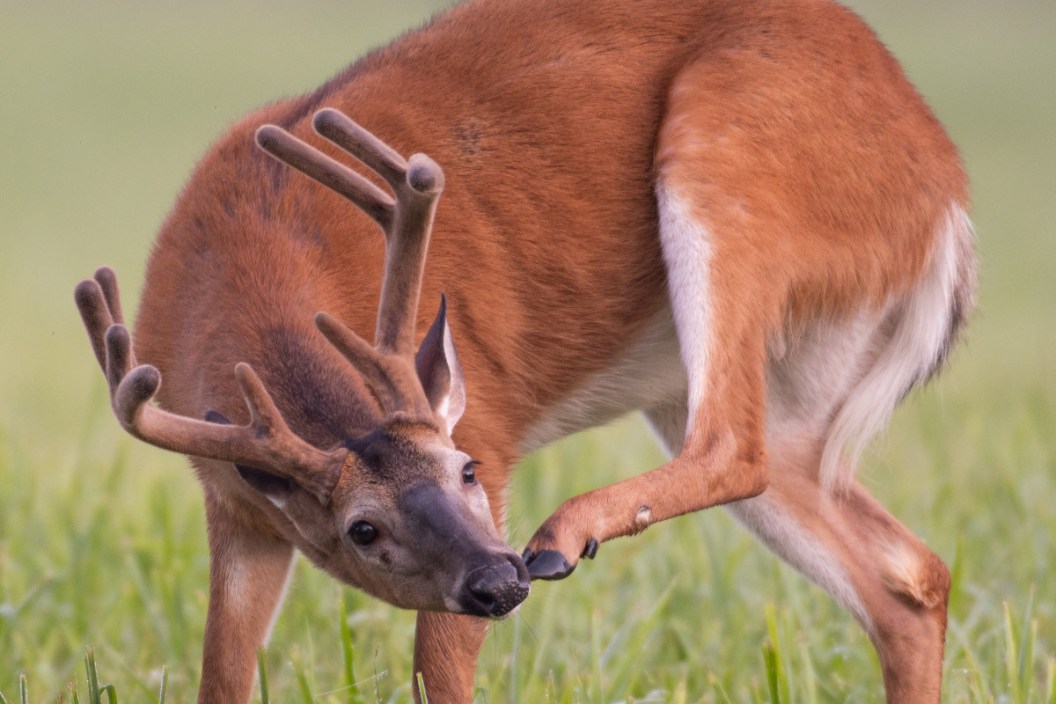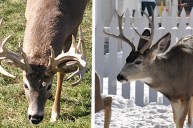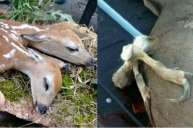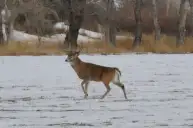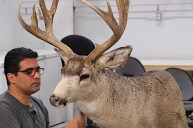If you're like most hunters, you probably don't think about deer hooves all too often, other than trying to figure out how big the buck was that made that set of tracks you're following. However, the hooves of whitetails and mule deer are much more than simply a means of getting around. The animals use their hooves for communication, uncovering food sources during harsh winters, and even for defense. What's more, a deer's hooves are often a vital indicator of an animal's health, and if a deer's hooves are bad, odds are the animal isn't doing so well either. This everything you ever wanted to know about deer hooves, and several things you probably didn't know about them. From what they're made of, to the reasons they have split feet, they're more interesting than many hunters give them credit for.
What Are Deer Hooves Made Of?
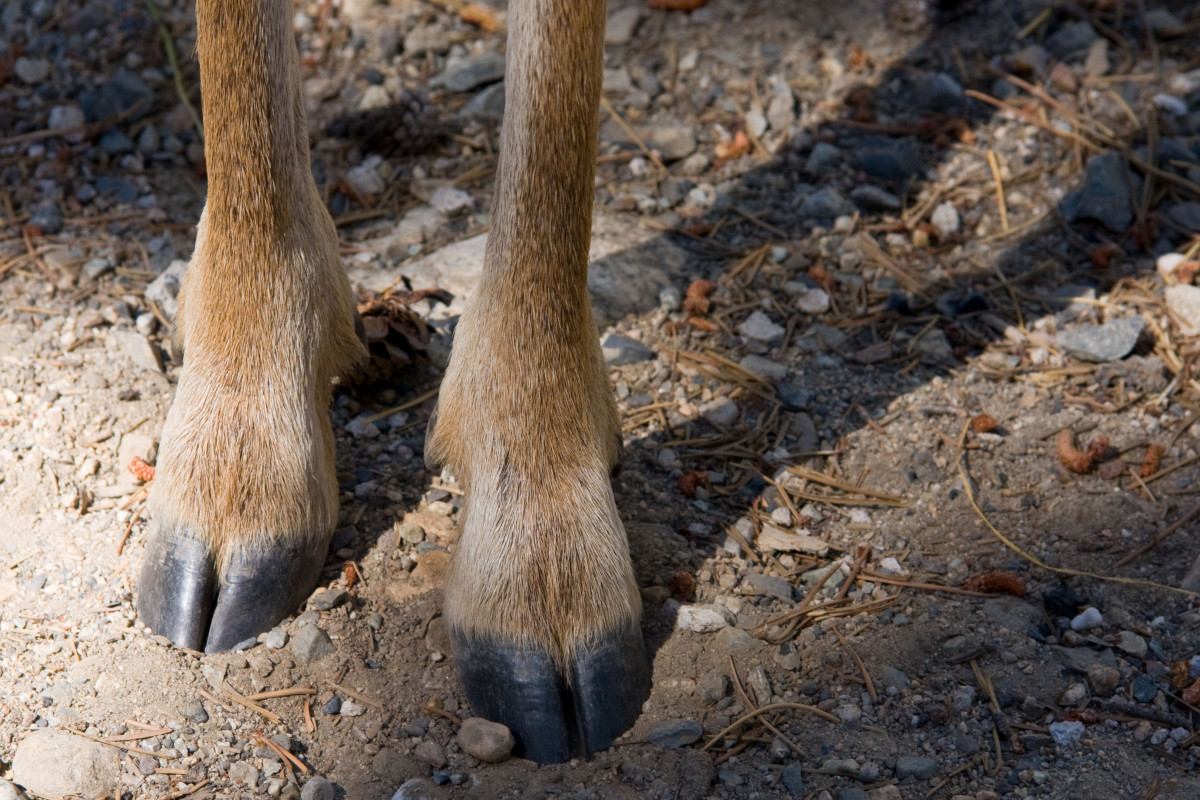
epantha via Getty Images
Many hunters probably never even stop to think about this question. As ungulates, whitetail deer and mule deer are technically members of the greater Artiodactyla family, which includes sheep, cows, goats, gazelles, and antelope, as well as elk, moose, red deer, and dozens of other deer species. The deer of North America are cloven hoof animals, which is just a term for animals that have hooves that are split toed in nature. These toes are made mostly of keratin, which is the same substance that makes up your fingernails. The next time you harvest a deer, feel the hooves, and note how they have nearly the same texture as a fingernail. The pad of the foot is usually a bit softer, helping to cushion the animal's feet over rougher ground.
Speaking of rougher ground, mule and whitetail deer hooves grow throughout the animal's life. In most cases, the length of the hooves is controlled simply through the animal walking around and keeping them worn. You'll likely notice more wear on the hooves of animals living in rocky, dry, mountainous areas vs. those living in more agricultural or forested regions. Mule deer hooves are usually more blunted in nature compared to whitetails for this reason.
According to the University of Georgia, during normal conditions, a deer's hooves will grow around 2.5-inches per year. The growth rate of the hooves slows slightly the older the deer gets, which is why some deer footprints are quite distinctive once the animal gets older. Just like deer antlers, hooves see most of their growth during the summer months when food is most plentiful.
In addition to the cleft-like hooves most deer hunting enthusiasts are familiar with, deer also have a set of dew claws on each foot. These claws are vestigial in nature. That means they are evolutionary leftovers from some other more ancient form of deer that had more use for them. Dew claws aren't entirely worthless, however. They do provide a little added traction depending on the terrain. However, you'll notice that most deer footprints do not show any signs of dew claws unless the animal is running or moving through heavy snow. It seems likely that perhaps one day whitetails and mule deer may not have dew claws at all.
The Many Ways Deer Use Their Hooves
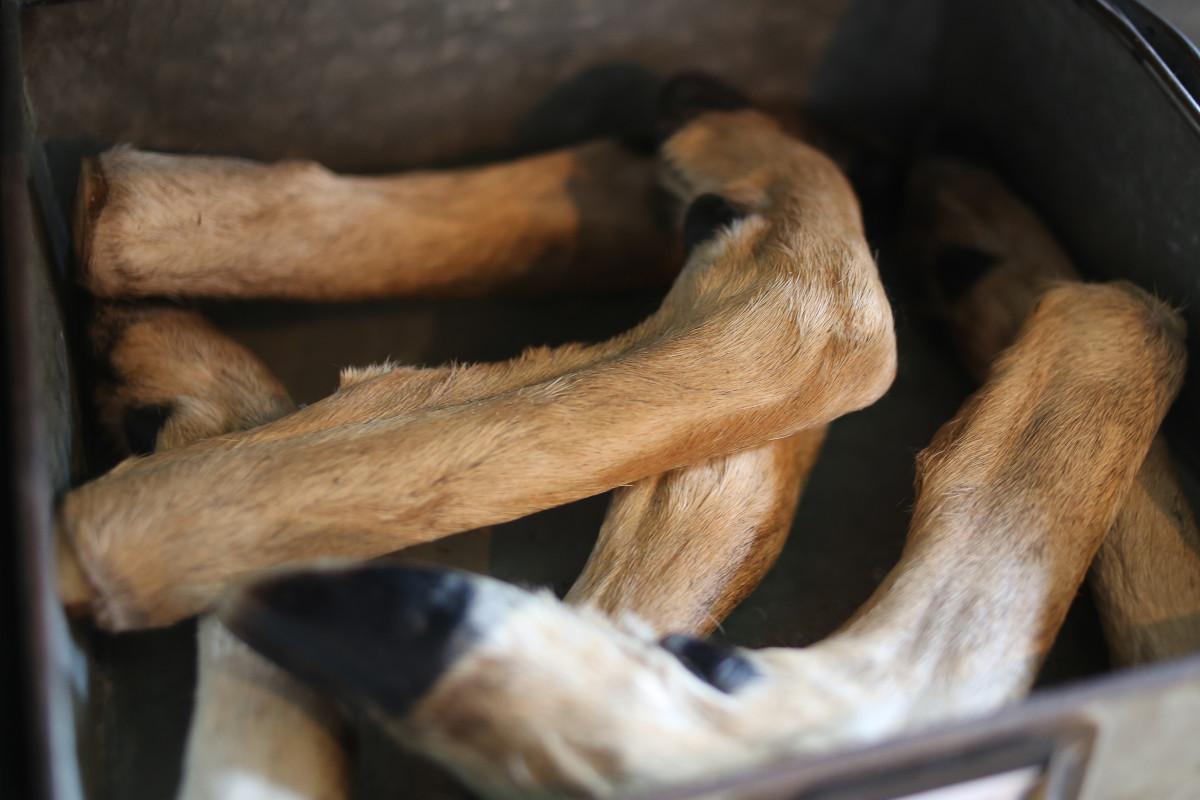
Holly Cromer via Getty Images
Deer legs and feet aren't just for walking—there's a bevy of other ways deer utilize their hooves. Most hunters are already familiar with whitetail bucks using their feet to make scrapes. However, it's not just the bucks that are utilizing them. Does, and even fawns will utilize "community scrapes" as a means of simply communicating what deer are utilizing an area. The sharp, pointed nature of a deer's hooves is what makes it possible for them to paw up the Earth, making it easier for them to urinate into the dirt and leave a strong scent behind. It's possible there's some greater meaning behind these scrapes that we humans cannot fully comprehend.
Scrapes aside, deer also spread scent via their hooves through what is known as an interdigital scent gland. The next time you harvest a deer, spread the toes of the feet apart and feel around. You'll find a small scent gland that leaves the deer's signature scent everywhere they go. Most of us have seen an animal that seems to be closely or identically following the deer hoof prints of another. It's not likely they are following deer tracks, as deer have poor eyesight. It's more likely the deer is following the scent of another. It's thought these glands help to mark safe game trails, or simply to let other deer know where others are gathering. These glands are present on both the hind and front hooves.
Deer can also utilize their hooves for defense against predators like coyotes or bobcats. Their feet are sharper than they look, which is why you should always be cautious when approaching a downed deer. We've read more than one story about an over-eager hunter approaching a "dead" deer, only to be surprised by a hoof attack. Fortunately, that sort of thing is extremely rare.
Finally, deer use their hooves as a way of conveying alarm or picking off hiding predators, which can often be humans. Ever had a doe stare you down and start stomping? She's either caught a whiff of you, or she's seen you moving. Either way, she knows something isn't right, and she's probably hoping those stomps will get the source of danger to reveal itself. At the same time, the stomp creates an audible noise that all deer recognize as a universal signal of possible danger being present. We don't know about you, but we hate those stomps. They've ruined far more hunts than we'd care to admit.
Deer Hooves as an Indicator of Health
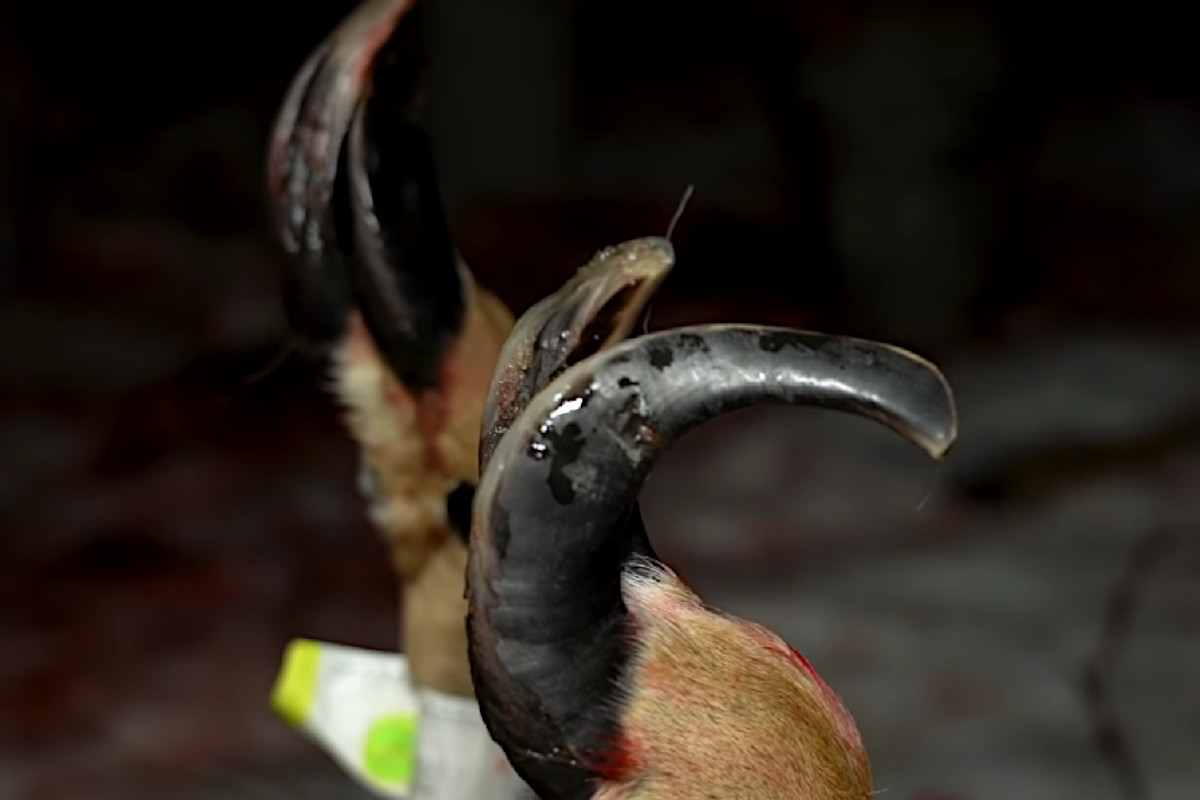
YouTube: The Lindsey Way
Scientists have discovered in recent years that a deer's hooves are a great visual indicator of whether an animal has survived a bout with either epizootic hemorrhagic disease (EHD) or bluetongue virus (BTV). These two terms are often used interchangeably because they are basically the same thing. It's an orbivirus spread by biting gnats and midges that causes excessive thirst, overheating, and respiratory issues in most deer. Often, the animal dies from the disease. However, unlike chronic wasting disease (CWD), which has been proven to always be fatal, deer can survive a bout with EHD or BTV.
According to the National Deer Association, the deer's body effectively stops all hoof growth while battling the disease. Once the deer has finally beaten the disease, growth resumes. The problem is, this usually results in cracking or fractures on the hooves as they don't usually resume growing right where they left off. Some deer fare through a bout of EHD or BTV better than others. Some recover fully and show only slight cracking of the feet that doesn't impede their ability to move around at all. Others suffer severe cracking that effectively cripples them, and can cause a slow, painful death.
In some cases, hoof growth can continue unabated to the point that they take on a curved or pointy "elf-like" appearance. This condition is usually called "sleigh hoof," and it is believed to be a result of overfeeding, eating foods that are high in energy, or simply some type of mineral deficiency. Whatever the cause might be, a case of sleigh hoof can be extremely painful for the animal.
If you see a deer that seems to be hobbling along because of obvious problems with its hooves, it's probably best to harvest that animal and put it out of its misery. While hoof problems can be treated in pen-raised deer like modern-day cattle, nature shows no mercy for animals that cannot effectively flee from predators.
For more outdoor content from Travis Smola, be sure to follow him on Twitter and Instagram For original videos, check out his Geocaching and Outdoors with Travis YouTube channels.
